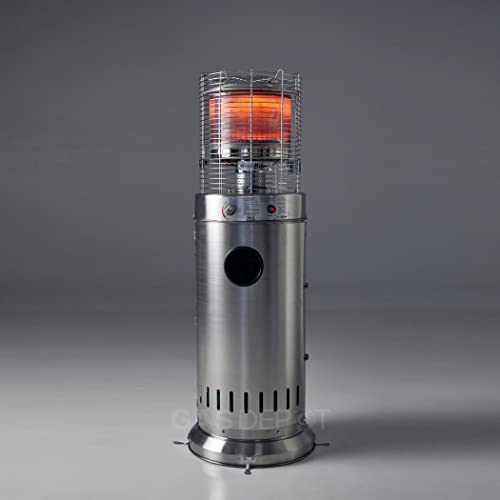15 Reasons To Not Ignore Buy Gas Radiant Heaters
Buying Gas Radiant Heaters: A Comprehensive Guide
Gas radiant heaters have acquired appeal in current years for their effectiveness and ability to provide instantaneous heat. As Outdoor Gas Heaters and businesses try to find ways to keep their spaces comfy, comprehending the features, advantages, and considerations when acquiring these heating units can be extremely useful. This post explores the intricacies of gas radiant heaters, assisting prospective buyers in making informed choices.
What are Gas Radiant Heaters?
Gas radiant heaters are gadgets that use propane or natural gas to release heat straight into a space. Rather than heating the air, they warm items and people in their area, supplying convenience faster and efficiently. These heaters are popular for both indoor and outdoor settings due to their adaptability and efficiency.
Key Features of Gas Radiant Heaters
- Direct Heating: Unlike conventional heaters that warm the air, gas radiant heaters offer direct warmth, making them an efficient option for rapidly warming up spaces.
- Mobility: Many models are readily available as portable systems, permitting them to be quickly moved from one location to another.
- Fuel Variety: Gas radiant heaters can be powered by natural gas or propane, giving users flexibility based on accessibility and choice.
- Adjustable Settings: Most gas radiant heaters included adjustable heat settings, allowing users to tailor the level of heat based on their requirements.
Advantages of Gas Radiant Heaters
- Energy Efficiency: These heaters convert gas into heat effectively, resulting in lower utility bills compared to electric heaters.
- Quick Heating: Radiant heat is felt practically instantly, making these heaters suitable for unexpected temperature drops.
- Low Maintenance: Gas radiant heaters usually require less maintenance than electric models, making them a hassle-free choice.
- Ecologically Friendly: When powered by clean gas, these heaters can be a more ecologically sustainable choice compared to other heating approaches.
Kinds Of Gas Radiant Heaters
When it comes to picking a gas radiant heater, it's important to understand the different types readily available. Below are the most common options:
- Indoor Gas Radiant Heaters: Designed for indoor spaces, these heaters are normally vented or unvented and often featured integrated security features.
- Outdoor Gas Radiant Heaters: Commonly used in outdoor patios or outdoor dining areas, these heaters are developed to stand up to the elements.
- Wall-Mounted Gas Radiant Heaters: A space-saving option, these units are perfect for smaller areas and can be outfitted with different heat outputs depending on the area's needs.
- Freestanding Gas Radiant Heaters: These portable models can be utilized in numerous locations, perfect for those who require versatility.
Purchasing Guide: How to Choose the Right Gas Radiant Heater
When acquiring a gas radiant heater, numerous factors need to be thought about to ensure you pick the ideal design for your space:
1. Heating Capacity
- Measured in BTUs (British Thermal Units), the heater's capacity determines how much location it can efficiently warm. Purchasers should examine their particular needs based upon room size.
Space Size (sq feet)
Recommended BTUs (for Gas Radiant Heaters)
100 – 200
5,000 – 10,000 BTUs
200 – 400
10,000 – 20,000 BTUs
400 – 600
20,000 – 30,000 BTUs
600 – 800
30,000+ BTUs
2. Type of Gas
- Consider whether you will be utilizing propane or gas, as different heaters cater to different fuel types.
3. Security Features
- Search for models geared up with safety features such as automatic shut-off valves, tip-over defense, and oxygen deficiency sensors.
4. Setup Requirements
- Some heaters might require professional installation, particularly vented models. Make certain to consider the costs and requirements connected with setup.
5. Mobility
- If versatility is important, consider portable models that can be quickly moved from one place to another.
Installation and Maintenance
Gas radiant heaters are usually simple to install, especially portable models. Nevertheless, vented options may require professional installation to ensure they meet local safety codes.
Maintenance generally involves:
- Regular cleaning to avoid dust accumulation.
- Checking gas connections and fittings for leaks.
- Guaranteeing safety features are practical.
Tip: Regular checks around the system can assist extend its life expectancy and preserve security.
Often Asked Questions (FAQs)
Q1: Are gas radiant heaters safe for indoor use?A1: Yes
, as long as they are properly vented and equipped with essential security features, they can be securely used inside.
**Q2: Can gas radiant heaters be used in enclosed spaces?A2: Unvented gas heaters can posture threats in enclosed spaces due to potential suffocation or carbon monoxide accumulation. Always make sure sufficient ventilation. Q3: How do I know what size heater I need?A3: The suitable size depends upon the location you intend to heat. Refer to the BTU chart
above to determine your needs. Q4: What is the distinction in between propane and gas heaters?A4: The primary difference lies in their energy source
**; propane is delivered via tanks, while natural gas is typically piped into homes. Q5: How can I make the most of efficiency?A5: Ensure the heater is appropriately sized for your space, preserve it regularly, and consider using it in mix
**with other heating techniques for optimum comfort. Gas radiant heaters can be an excellent addition to any home or service, using energy-efficient and quick heating solutions. By comprehending the different types, features, and considerations
when buying, purchasers can make educated decisions that fulfill their heating requires. With the ideal option, these heaters offer convenience, reliability, and a welcoming environment throughout chillier seasons.  ******
******